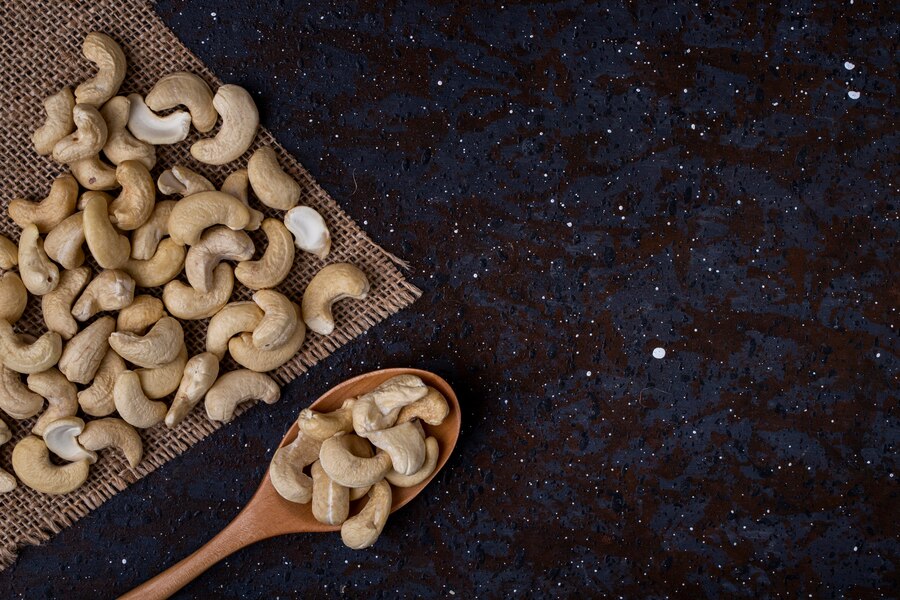Sprouting is a process that involves germinating seeds, grains, or nuts to enhance their nutritional value and digestibility. While cashews are a popular and versatile nut, they are often consumed raw or roasted. However, sprouting cashews can unlock additional health benefits and make them easier to digest. This article delves into the benefits of sprouting cashews, the process of sprouting, and creative ways to incorporate them into your diet.
Benefits of Sprouting Cashews
- Enhanced Nutritional Value: Sprouting cashews increases their nutrient content, including vitamins, minerals, and antioxidants. The sprouting process activates enzymes that improve the bioavailability of nutrients, making them easier for the body to absorb.
- Improved Digestion: Raw nuts contain enzyme inhibitors that can interfere with digestion. Sprouting neutralizes these inhibitors, resulting in nuts that are gentler on the digestive system and less likely to cause bloating or discomfort.
- Reduced Anti-Nutrients: Cashews, like other nuts and seeds, contain phytic acid, an anti-nutrient that can bind to minerals and reduce their absorption. Sprouting significantly reduces phytic acid levels, enhancing mineral availability.
- Increased Protein Quality: The sprouting process can improve the amino acid profile of cashews, making their protein content more complete and beneficial for muscle repair and growth.
The Sprouting Process
Sprouting cashews at home is simple and requires minimal equipment. Here’s a step-by-step guide:
- Choose Raw Cashews: Ensure you are using raw, unroasted, and unsalted cashews. Roasted or processed cashews will not sprout.
- Soak the Cashews:
- Place the raw cashews in a bowl.
- Add enough filtered water to cover the cashews completely.
- Soak the cashews for 4-6 hours. Some prefer to soak overnight for convenience.
- Drain and rinse the cashews thoroughly.
- Rinse and Drain:
- After soaking, place the cashews in a sprouting jar or a large bowl.
- Rinse the cashews with fresh water and drain thoroughly.
- Repeat the rinsing and draining process every 8-12 hours for the next 1-2 days.
- Monitor the Sprouts:
- Keep the sprouting jar or bowl in a cool, dark place.
- Continue the rinsing and draining cycle until you notice small sprouts emerging from the cashews. This usually takes 1-2 days.
- Once sprouted, give the cashews a final rinse and drain well.
- Store the Sprouted Cashews:
- Transfer the sprouted cashews to an airtight container.
- Store them in the refrigerator for up to 5-7 days.
- For longer storage, you can dehydrate the sprouted cashews and keep them in an airtight container.
Creative Uses for Sprouted Cashews
Sprouted cashews are incredibly versatile and can be used in various recipes. Here are some ideas to incorporate them into your diet:
- Nut Milk: Blend sprouted cashews with water to create a creamy, dairy-free milk. Strain the mixture through a nut milk bag for a smooth texture.
- Cashew Cream: Blend sprouted cashews with water, lemon juice, and a pinch of salt to make a rich, versatile cream that can be used as a base for sauces, soups, or desserts.
- Smoothies: Add sprouted cashews to your smoothies for an extra boost of protein and creaminess.
- Salads: Sprinkle sprouted cashews over salads for added crunch and nutrition.
- Snacks: Enjoy sprouted cashews as a healthy snack on their own or mixed with dried fruit and seeds.
- Baking: Use sprouted cashews in baking recipes, such as cookies, energy bars, and granola, to enhance the nutritional value of your treats.
Conclusion
Sprouting cashews is a simple and effective way to boost their nutritional profile and make them easier to digest. By following the sprouting process and incorporating sprouted cashews into your diet, you can enjoy their enhanced benefits and versatility. Whether you’re making creamy cashew milk, adding them to smoothies, or snacking on them directly, sprouted cashews offer a delicious and nutritious addition to your meals.










